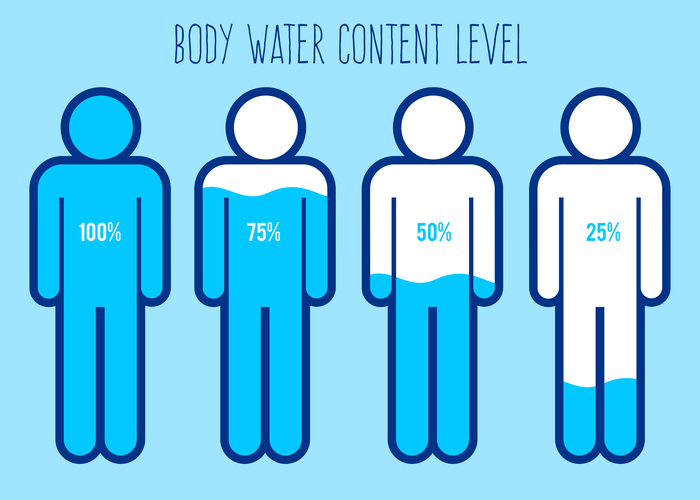Content
A recent survey of rosacea patients found that 90 percent of responders found that limiting their alcohol consumption helps greatly to reduce sudden outbreaks. Recent studies have shown that moderate alcohol consumption may be beneficial to well-being. However, it can have many detrimental effects on the body.


When alcohol abuse begins to negatively impact a person’s life and causes harm, it is diagnosed as alcohol use disorder . Recognizing the warning signsof alcohol abuse and getting proper treatment can make a significant difference in someone’s recovery process.
Physical Warnings Signs Of Alcoholism And Alcohol Abuse
However, alcohol face changes can be more permanent because of how the skin and the body has been damaged by chronic drinking. Alcohol can significantly change your physical appearance, especially in areas of the body where the skin is thinner, such as the face.


However, women may develop the disease after less exposure to alcohol than men. Because most East Asians have a variant in the ADH gene, this risk is lowered somewhat because the ADH variant reduces the risk of esophageal cancer four-fold. Many cases of alcohol-induced respiratory reactions, which involve rhinitis and worsening of asthma, develop within 1–60 minutes of drinking alcohol and are due to the same causes as flush reactions.
What Are The Symptoms Of Alcoholism?
There are many symptoms of liver damage, so don’t ignore them, especially if you know you’ve been drinking too much and not taking care of your body. It’s rare, but the palms of your hands — and maybe the soles of your feet — might turn red for no reason. It can be genetic, but it could also result from medication, liver disease, or heavy alcohol use.
It is important to be specific about the problems in the employee’s performance and conduct and the particular incidents of concern. It might be helpful to rehearse this or at least go over the documentation with the EAP counselor. In jobs requiring long-term projects or detailed analysis, an employee woman addicted to drinking paint may be able to hide a performance problem for quite some time. Even though you must not try to diagnose the problem, there are many signs that may indicate a problem with alcohol, and should trigger a referral to the EAP. A week after your last drink is when your skin really starts to see improvement.
Red Wine
An agency may not take disciplinary action solely because an employee declines to undergo a voluntary alcohol test. Before actually meeting with the employee, you should gather any documentation of performance or conduct problems and think about what items to discuss with the employee.


If you do not have access to a phone contact Web Poison Control Services for online assistance. Skeletal System – Alcohol abuse inhibits new bone production, putting one at risk of osteoporosis and bone fractures. It also makes muscles more likely to weaken, cramp or atrophy. Use My Current Location Setting your location helps us to show you nearby providers and locations based on your healthcare needs. All of the information on this page has been reviewed and verified by a certified addiction professional. Don’t take over the problem drinker’s responsibilities, leaving them with no sense of importance or dignity. You’re spending less time on activities that used to be important to you because of your alcohol use.
Do Your Skincare Before Bed
Inpatient treatment – This consists of a formal, residential program which may include detox at the beginning. Inpatient programs last anywhere from one to six weeks, typically 3-4 weeks. There are some programs called “day treatment” in which patients spend the entire day at the treatment center but go home at night or on weekends. Inpatient treatment is very expensive and can easily cost $5,000 to $10,000. Another problem that develops with alcohol and your skin is that it can cause flare ups of skin conditions that you may already have, which is particularly true of rosacea and psoriasis. Rosacea affects around 16 million Americans and is characterized by redness across your cheeks, chin, forehead and nose, though can spread to affect your ears, scalp and chest. With time blood vessels appear in rosacea, so it is no surprise that alcohol can exacerbate the problem.
- In addition, there are several stages of the disease which are often described as early, middle, and late.
- It can help someone handle withdrawal symptoms and emotional challenges.
- For example, you recognize that your alcohol use is damaging your marriage, making your depression worse, or causing health problems, but you continue to drink anyway.
- Using alcohol in situations where it’s physically dangerous, such as drinking and driving, operating machinery while intoxicated, or mixing alcohol with prescription medication against doctor’s orders.
While there is no exact formula to determining whether or not someone is an alcoholic, symptoms often co-occur. One symptom may snowball into another, fueling additional problems down the road. Although there are many warning signs for alcoholism, some can be hard to identify. How COVID-19 Has Impacted Alcohol AbuseAs the COVID-19 pandemic continues, the numbers of alcohol abuse have continued to rise, causing concern across America. Rethinking Drinking – Tools to help you check your drinking patterns, identify signs of a problem, and cut back. Avoid emotional appeals that only add to the problem drinker’s feelings of guilt and increase their compulsion to drink or use other drugs. If you find yourself rationalizing your drinking habits, lying about them, or refusing to discuss the subject, take a moment to consider why you’re so defensive.
What Is Alcoholic Nose?
Rather, drinker’s nose is actually a condition stemming from rosacea, a chronic skin disorder that causes visibly red or swollen skin and sometimes bumps or acne-like conditions. Therefore, when severe rosacea spreads to the nose, it is termed rhinophyma (literally meaning “nose swelling”).
As tolerance builds, a person who consumes alcohol will require a higher volume in order to experience the familiar effects. Second, the body will go through withdrawal if intake of the familiar drug ceases or if there is a significant reduction in the usual amount. When a chronic alcohol abuser stops drinking the signs of withdrawal will set in. They may continue to drink in order to avoid feeling such symptoms. Researchers, psychiatrists, medical clinicians, therapists, and other addiction professionals rely on the Diagnostic and Statistical Manual of Mental Disorders-5 to diagnose mental health disorders.
The resulting irritating flushing reaction tends to discourage affected individuals from drinking. Overall, the 11 factors address both the physical and psychological components of alcohol use disorder. The distinction between physical dependence and psychological addiction is an important one to understand. As the National Institute on Drug Abuse explains, physical dependence is a component of addiction, but it is not synonymous with addiction. In other words, a person can be physically dependent on alcohol or another drug of abuse without being psychologically dependent on it. There are obvious advantages to getting the alcoholic into treatment earlier rather than later. One advantage is that, the earlier treatment is begun, the probability of having less expensive treatment, such as outpatient care, is increased.
Otherwise, annual leave or leave without pay would be appropriate. Normally, the employee would not be charged as absent without approved leave unless the Alcoholism in family systems employee’s absence had not been approved. Check with the Human Resources office about the rules and policies regarding approval and denial of leave.


The National Institute on Alcoholism and Alcohol Abuse defines binge drinking as a pattern of alcohol consumption that brings blood alcohol concentration levels to 0.08 g/dLi—in a short period of time . This typically occurs after five or more drinks for men and four or more drinks for women. Unfortunately, these conditions and these symptoms cannot be easily cured. In fact, sometimes a red face after drinking can indicate much more severe issues ahead. The best way to approach clearing up your alcohol-related face changes is to quit drinking for good. This means finding a treatment program that will help you with all of the physical and emotional side effects of alcoholism. These include arrests, fines and possible jail time for driving under the influence of alcohol.
In some cases, the severity of the addiction is such that inpatient care is not needed, and the client undergoes only outpatient treatment. It may include education about the disease, individual or group therapy, or follow-up counseling. Outpatient treatment is not as expensive as inpatient treatment and may last anywhere from one month to a year.
An enzyme issue can turn your cheeks rosy after you drink. ALDH2 is the enzyme that breaks down alcohol’s toxic compound. When it isn’t working right, the toxins stay in your cells, which leads to warmth and flushing. It’s a genetic issue that’s more likely to affect people from Asian backgrounds.
Great Idea Canada! This is an environmental change that could change the face of alcoholism and addiction over time. #letsdoit #ctcreno #ChangeTheWorld https://t.co/1bWx2ETynw
— Rise Up Reno Prevention Network (@riseupreno_) November 27, 2017
Also, the severity of alcohol abuse may play a role in the warning signs a person exhibits. For example, some people try to cover their alcohol abuse by drinking in private and isolating themselves from others. This makes it challenging for family members or friends to intervene and help their loved one. Whether you choose to go to rehab, rely on self-help programs, get therapy, or take a self-directed treatment approach, support is essential.
The health of your skin is just as dependent on a supply of vitamins and minerals as any other part of your body. Alcohol also interferes with the absorption of the fat soluble vitamins A and E, which both help to protect your skin from damage. Meanwhile, in alcoholism skin can also suffer, as metabolism of alcohol depletes levels of B vitamins that otherwise promote a healthy circulation to deliver additional nutrients to your skin. Alcohol dependence, abuse, and addiction aren’t the same thing. People who abuse alcohol will drink in excess, but they may not be physically dependent and may only have a few of the warning signs mentioned above. A person who is physically or psychologically dependent on alcohol may not yet be addicted.





